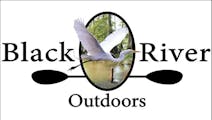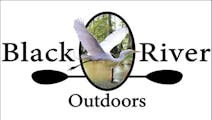Loggerhead Sea Turtle Rescue
 A group of Black River Outdoors Guides and some naturalists from Huntington Beach State Park spent last Sunday afternoon paddling in the marsh behind Pawleys Island looking for the rare and elusive Diamond Backed Terrapin. These little salt marsh turtles were hunted heavily for turtle soup in the past (this is no longer a popular meal fortunately). To this day many are killed when they get stuck in crab pots. All this means that they are often very hard to find. This expedition included myself, my wonderful wife Amanda, new guides Chance and Keenan, as well as Huntington Beach State Park naturalists Molly and Katie. Keenan had yet to get a good look at a terrapin in the wild, and Chance was eager to photograph one if we could catch it.
A group of Black River Outdoors Guides and some naturalists from Huntington Beach State Park spent last Sunday afternoon paddling in the marsh behind Pawleys Island looking for the rare and elusive Diamond Backed Terrapin. These little salt marsh turtles were hunted heavily for turtle soup in the past (this is no longer a popular meal fortunately). To this day many are killed when they get stuck in crab pots. All this means that they are often very hard to find. This expedition included myself, my wonderful wife Amanda, new guides Chance and Keenan, as well as Huntington Beach State Park naturalists Molly and Katie. Keenan had yet to get a good look at a terrapin in the wild, and Chance was eager to photograph one if we could catch it.
It turns out that terrapins are very hard to catch, and we spent four hours trying to get close enough to catch one of those little turtles with no success. The good news is that we saw at least a dozen of the little guys, but each one of them would poke its head up out of the water, wait for us to get about six feet away, and then calmly vanish back to deeper water. We finally admitted defeat and paddled back to the landing thinking we were going to go home not having caught a single turtle.
With the boats loaded into the truck and all six of us crammed inside (that truck smelled amazing with six sweaty, muddy people in it), we headed back across the south causeway of Pawleys Island. It was dead low tide so there was more mud than water in the marsh, but Chance calls out from the back seat “Hey! I saw a sea turtle!”. Since it was dead low tide we all though Chance had clearly lost his mind (we still think that). Just in case, I pulled the truck off to the side and we all piled out to go see what Chance claimed was a sea turtle.
We got to the spot, and there was no turtle. There was barely any water, just an expanse of pluff mud and oysters. We were more convinced that Chance had lost his mind, but he was adamant that we go down and look for this sea turtle. This may seem like an easy thing, but pluff mud ranges from ankle to armpit deep, depending where you step, and oysters are natures razorblades. One does not simply walk into pluff mud. Before any of us were willing to risk life, limb, and shoe in the mud, Katie had the brilliant idea to ask the guy fishing on the bridge if he had seen the afore-mentioned turtle.
It turns out the fisherman had seen a turtle, and maybe Chance wasn’t losing his mind after all (jury is still out on that one). Thus Chance, Keenan, Katie, and myself gamely plunged into the pluff mud in search of a sea turtle (Molly and Amanda were still skeptical and didn’t think waist deep mud was a good idea and volunteered to keep an eye out from the causeway). There was much slipping and slogging and searching for shoes that came off in the muck, and we saw no sign of a turtle. After what seemed like an hour (but was more like ten minutes), I had gotten to the far side of the little pool of water and still found no sea turtle. I turned around and said “There is no turtle in this pool”. I had barely finished the last word when the darn sea turtle popped its head up not ten feed in front of me (and about two feet from Chance).
Sure enough, there was a big loggerhead sea turtle stuck in the marsh! She was covered in barnacles, salt water leeches (yes, those are a thing, and they are creepy looking), and some kind of shrimp that bit the heck out of Chance’s finger. She clearly was in bad shape and needed assistance. The only problem is sea turtles are very heavy, and pluff mud is very deep and sticky (especially when you’re trying to carry a big, heavy turtle). It took all four of us to carry the poor turtle out of the mud, up the bank, and onto the causeway. In the process Keenan lost both of his shoes (never to be seen again), and Chance and Katie each broke one of their shoes as well. I was the only person who managed to keep both shoes fully functional throughout the rescue (it’s because I’m so graceful and light on my feet).
While we struggled through the mud, Amanda and Molly were on the phone trying to arrange transport for the poor turtle to the sea turtle hospital in Charleston (yes, there is a hospital for sea turtles – it’s actually pretty amazing). They got hold of the South Carolina United Turtle Enthusiasts (SCUTE) people and they arranged for a vehicle and some volunteers to drive the turtle down to Charleston. For more info on SCUTE, their Facebook page is www.facebook.com/SCUTE-36320641283/
It turns out having a sea turtle on the side of the road causes quite a traffic jam, and two different police cars showed up to see what the commotion was and direct traffic. After a little while, the transport vehicle arrived and the turtle was whisked off to the hospital, where she is currently doing pretty well.
It turns out Sea Turtles can get what’s called ‘debilitated turtle syndrome’. It’s usually from eating plastic, and the turtle gets weak and unable to function normally. Barnacles begin to grow on the shell because of the turtles weakened state, and the barnacles further weigh down the turtle, making it even harder for it to swim and find food. At that point the turtle usually washes ashore and dies if it is not found and rescued. Even if the turtle is brought to a turtle hospital, some are too far gone and don’t survive. We will keep everyone updated as we hear news about her, and we are hoping for a successful rehabilitation.
The turtle has been named Chance, since it was only by chance that Chance happened to be riding with his head out the window (like a golden retriever) and see her stick her head up as we drove past.




